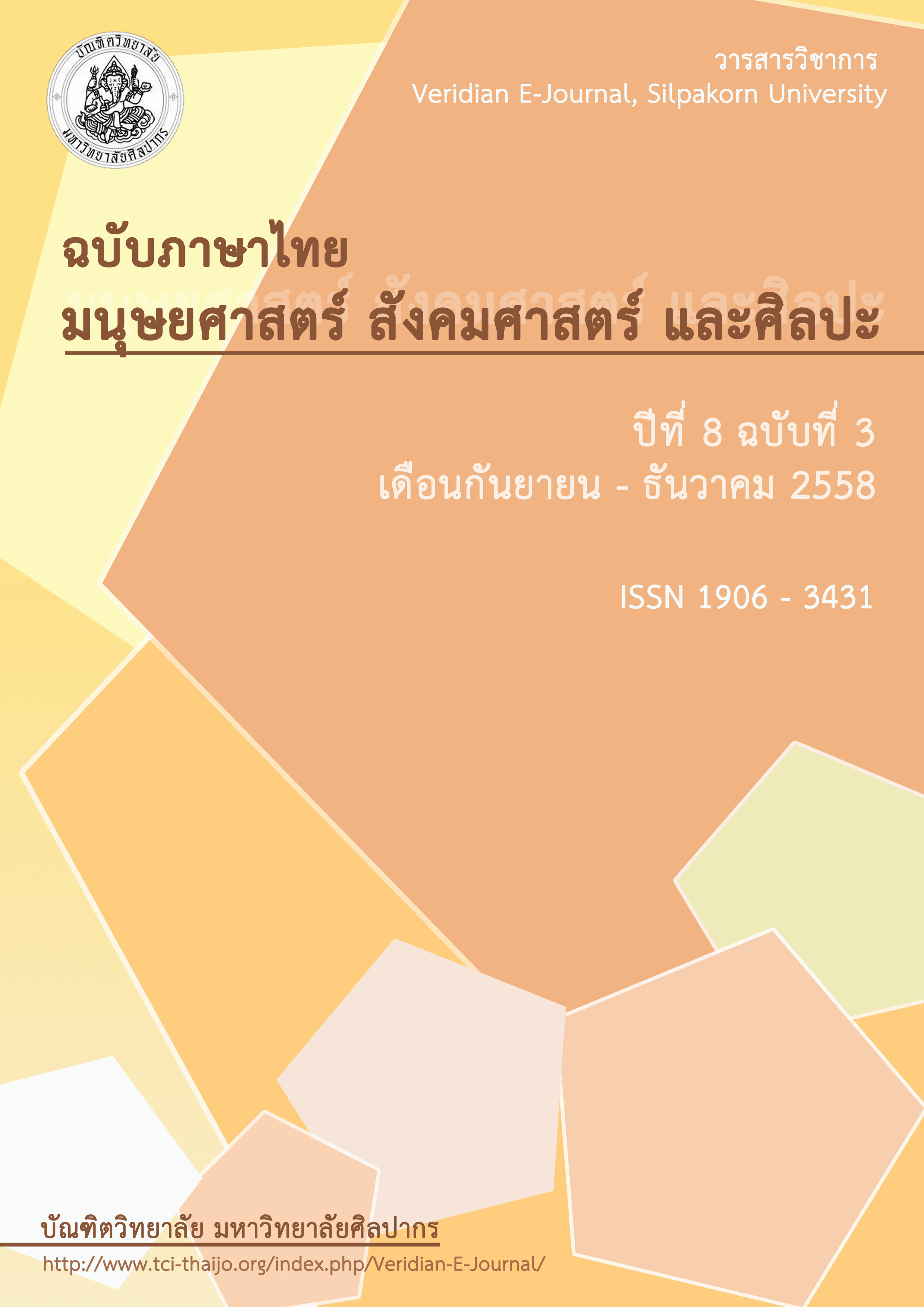บทบาทสถาปัตยกรรมประดิษฐานพระพุทธรูปนอนสมัยสุโขทัยและสมัยอยุธยา
Main Article Content
Abstract
บทคัดย่อ
บทความนี้เป็นส่วนหนึ่งของงานวิจัยเรื่องการศึกษาการออกแบบสถาปัตยกรรมวิหารพระนอนสมัยต้นรัตนโกสินทร์ถึงสมัยรัชกาลที่ 5 ในบริเวณวัฒนธรรมภาคกลางของประเทศ ที่มีจุดมุ่งหมายศึกษาบทบาทและการออกแบบวิหารพระนอนสมัยต้นรัตนโกสินทร์ในฐานะองค์ประกอบหนึ่งของผังวัด โดยการศึกษานี้ใช้วิธีการสืบสวนความหมายของวิหารพระนอนผ่านวรรณกรรมและศิลปกรรม, คติความเชื่อที่เกี่ยวข้อง,พัฒนาการผังวัด ที่มีวิหารพระนอนสมัยต้นรัตนโกสินทร์ถึงสมัยรัชกาลที่ 5 เป็นองค์ประกอบ รวมไปถึงการศึกษาบทบาทสถาปัตยกรรมประดิษฐานพระพุทธรูปนอนสมัยสุโขทัยและสมัยอยุธยาดังที่นำเสนอในบทความนี้ โดยสรุปเป็นบทบาทของทั้ง 2 สมัยได้ดังนี้
1. สมัยสุโขทัย นิยมสร้างอาคารประดิษฐานพระพุทธรูปปางต่างๆ เป็น "องค์ประกอบรอง" ของวัด จนต่อมาพัฒนาเป็นพระมณฑปประดิษฐานพระสี่อิริยาบถที่สร้างเป็น "ประธาน" ของวัด ที่มีผังจัตุรมุขที่รวมพระพุทธรูปทั้ง 4 (มีพระนอนปางสีหไสยาเป็น 1 ในนั้น)เข้าไว้ด้วยกัน โดยสมมติให้เป็นที่ประทับของพระพุทธเจ้าขณะดำรงพระชนม์ดำเนินพุทธกิจประจำวัน
2. สมัยอยุธยา มี 2 แบบหลัก แบบแรก วิหารพระนอนขนาดเล็ก(มีทั้งปางสีหไสยาและปางถวายพระเพลิง) ซึ่งนิยมสร้างเป็น "องค์ประกอบย่อย" ของวัด โดยเฉพาะพระนอนปางสีหไสยามักสมมติเป็นพระคันธกุฎี ส่วนแบบที่สอง พระนอนปางสีหไสยาขนาดใหญ่ นิยมสร้างเป็น "ประธาน" ของวัดและเป็นศูนย์กลางนอกพระนคร ซึ่งมักสมมติถึงพุทธประวัติเหตุการณ์สำคัญ ที่เน้นแสดงมหาบุรุษลักษณะและสภาวะพุทธะในลักษณะเหนือจริง
Abstract
This aticle is part of a study about Vihara for Reclining Buddha in the early Rattanakosin period to King Rama IV in the central part of Thailand, where there were own uniqueness of architectural design inwhich were built or renovated by Siamese elites. It observes the meaning of Reclining Buddha, the concepts and beliefs, Viharas of Reclining Buddha development plan of Buddha area which are in their composition, including Viharas of Reclining Buddha in the previous era. especially, there are in the Sukhothai period and Ayutthaya period. According to the scope of this artice, it is concluded;
1. Sukhothai period satisfied to build Architecture for Reclining Buddha is the secondary composed of the Buddha areas, Later evolved into Mandapa of the Four Pastures is the heart of Buddha areas, their means to the abode of Buddha and practices of Buddha
2. Ayutthaya period satisfied to build two characteristics; first, small Vihara for Reclining Buddha is the subordinate element of Buddha areas that means to mostly the abode of Buddha (besides, Reclining Buddha cremation posture). Second, large Vihara for Reclining Buddha is mostly the heart of Buddha areas and center of perimeter (besides, key element of Buddha areas at metropolis) that means to important events of Buddha on the concept of Buddha surrealistic approach.

